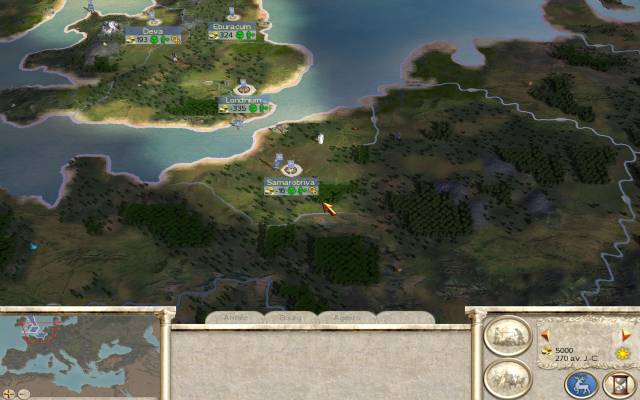The ancient world in 3D
More precisely, we are in 2004. Before Total War: Warhammer (recently entered the second incarnation ) TW was a known brand for its histo
rical environments. The first two video games in the series were Shogun (2000) and Medieval(2002), both major commercial successes but criticized for lack of accessibility. The third generation of Total War shoul
d have obeyed one principle: be mastodontic but accessible, just like the great colossal of the 1960s. It was probably from this inspiration th
at also came the setting: the ancient world. For the occasion, the graphic engine was rebuilt to make it fully polygonal. The result was,
for once, obvious: we will not be here to describe the ambitious success that Rome: Total War has had with critics and audiences. Rather, let’s understand how this video game works so well.
Ever since, Total War has a dual structure: strategic and tactical. In the first one you have to manage your own domains, place the armed forces and administer diplomacy and family; in the second one needs to resolve a conflict between two or mor
e armies. A division soon became an authentic brand, which in 2004 is brought to the far end of Rome. Letting go of the heaviest divisions
in predecessor “regions”, he throws the player into a 3D reproduction of 270 Europe ahead of Europe. Armies are represented by officers with a banner, which can act (movement, attack, construction) as lon
g as they have available Movement Points. City management goes through specific panels (parchments) from which to decide the structures to be built, units to train and to take into account the monetary situation. At each end turn, the computer responds by moving the other factions.
Aside from a tutorial summary, the rest is all in the player’s mouse. A burden of responsibility, however, is not hostile, because of the remarkable accessibility of the whole. Helped by the virtual counselor and the small explanatory cartridg
es of each option, he soon takes care of the empire. They learn to recognize the faults and virtues of the family of the faction, fight the males and combine the weddings of the girls. What was at the time seen as a defect (only three ini
tial factions, all Roman families) reinterprets now as the intention to offer a challenge and an “incentive to exploration”: other factions are unlocked by completing campaigns or defeating them in the role of the Romans. Obviously, the geog
raphical position will have a direct influence on the threats faced: iJulius will go against the Gauls, the Cornelians will face the Carthaginians and finally the Valeri will loot the rule between Macedonia and the Greek city-state. Too simplistic? Jus
t start over the game with any other non-Roman faction to find yourself completely changing tactics and development strategies.

